DORN: Objective Moon … reached !
In order to follow the DORN mission as closely as possible – from the launch of the Chang’E 6 rocket on May 3, 2024 to in situ experimentation and the return of lunar samples – a logbook is being published. It will be regularly updated by members of the IRAP team.
Tuesday June 25, 2024: Lunar regolith samples are received on Earth. The Chang’e6 mission has been a complete success! Congratulations to all the teams involved!
Tuesday June 4, 2024: Lunar regolith samples have been successfully collected. The DORN instrument took the expected radon and polonium measurements for almost 23 hours – data analysis is already underway. The upper section of the Chang’e6 probe has re-launched from its lunar base – heading for the Lunar Orbiter, leaving behind our instrument on the far side of the Moon …

Sunday June 2, 2024: The Chang’ E6 probe has landed in the Antarctic-Aitken basin on the far side of the Moon. In the 48 hours following its arrival, Chang’e 6 will take samples from the lunar surface, with the aim of obtaining 2 kg … while the French instrument DORN will measure radon and polonium on the surface of our satellite …
Wednesday May 8, 2024: Chang’E6 successfully enters orbit: “Under the precise control of the Beijing Aerospace Flight Control Center (BACC), the Chang’e 6 probe has successfully braked close to the Moon and smoothly entered circumlunar orbit. Braking near the Moon is a key orbital control: as the probe approached the Moon, it implemented braking so that its relative velocity was less than the Moon’s escape velocity, in order to be captured by the Moon’s gravity and complete its flight around the Moon.” (source CNSA – China National Space Administration)
“After a successful launch on May 03, the first ON of DORN took place the day before yesterday and lasted 10 hours. The only observable was the temperature of DORN measured by the lander, but this enabled us to check that everything went well. It was necessary to make sure that the survival was switched off before turning ON (an overcurrent would have tripped the fuse and we’d have lost the whole mission), so we put procedures in place to ensure this. The cruise went well, as you can see from the graphs below. This morning, the spacecraft entered orbit, with the next ON scheduled for the 19th.” by King Wah Wong and Pierre-Yves Meslin (IRAP)

Monday May 6, 2024: Chang’e 6’s journey will take 4 or 5 days to reach lunar orbit, before landing near the Moon’s south pole in early June. DORN will then activate for 48 hours: the amount of energy available is limited, and the lander has to carry out several missions. It will be the 1st French instrument active on the surface of our satellite (source CNES).
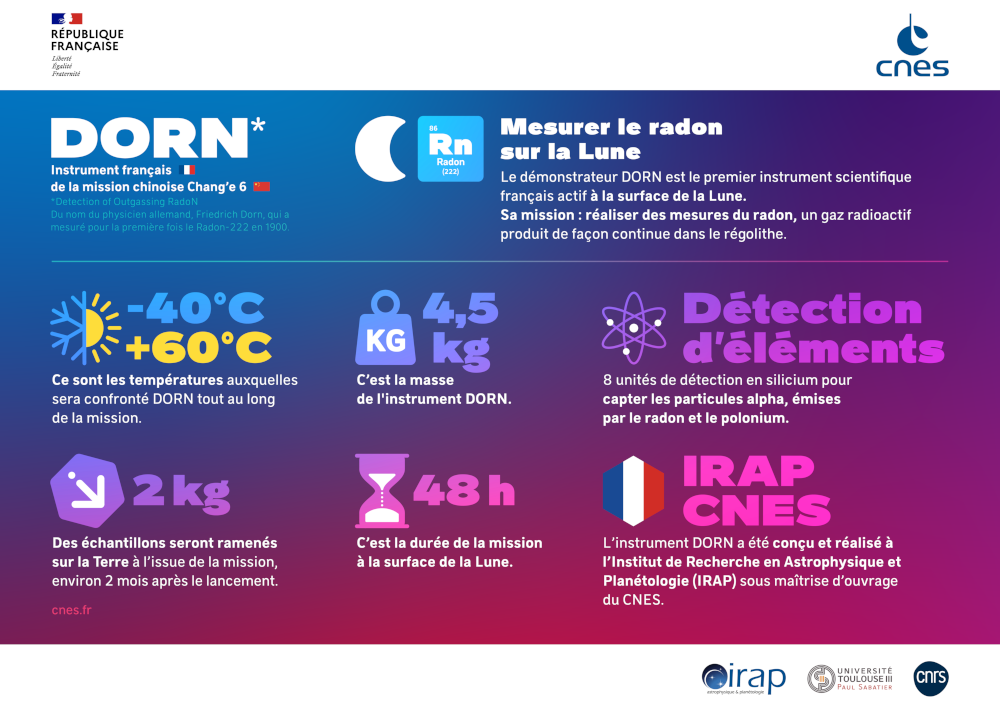
Friday May 3, 2024, 12h: The launch of the Chang’ E 6 mission is nominal. Below: some shots of the launch taken from the ground and the Long-March 5 rocket:
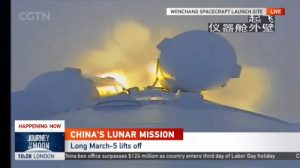



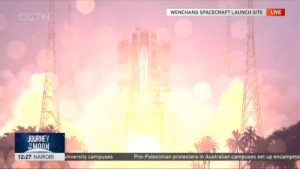
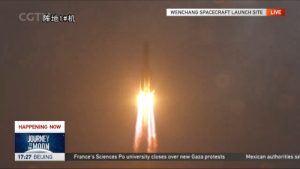
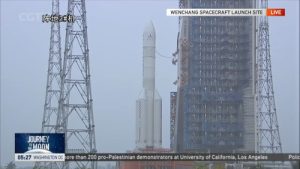
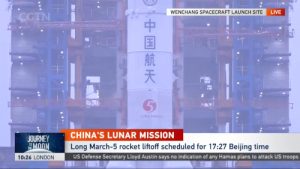
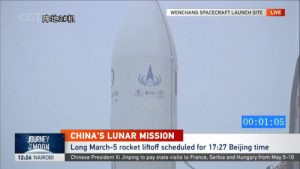
Friday May 3, 2024, 11am (UT + 2) : Follow the lift-off of the Chang’ E 6 rocket on the CGTN website.
Tuesday April 30, 2024: The Long March 5 launcher that will send the Chang’E 6 mission to the far side of the Moon has been placed on its launch pad (Hainan Island). The main aim of the Chinese Chang’E 6 mission is to return lunar samples, but it will also carry several international instruments (from Italy, Sweden, Pakistan and France). The DORN instrument, developed by IRAP under the supervision of CNES, will measure radon and polonium, two radioactive tracers, in orbit around the Moon and then on its surface, by capturing the alpha particles emitted by these radioactive nuclei as they decay. The launch is scheduled for May 3. Stay tuned!
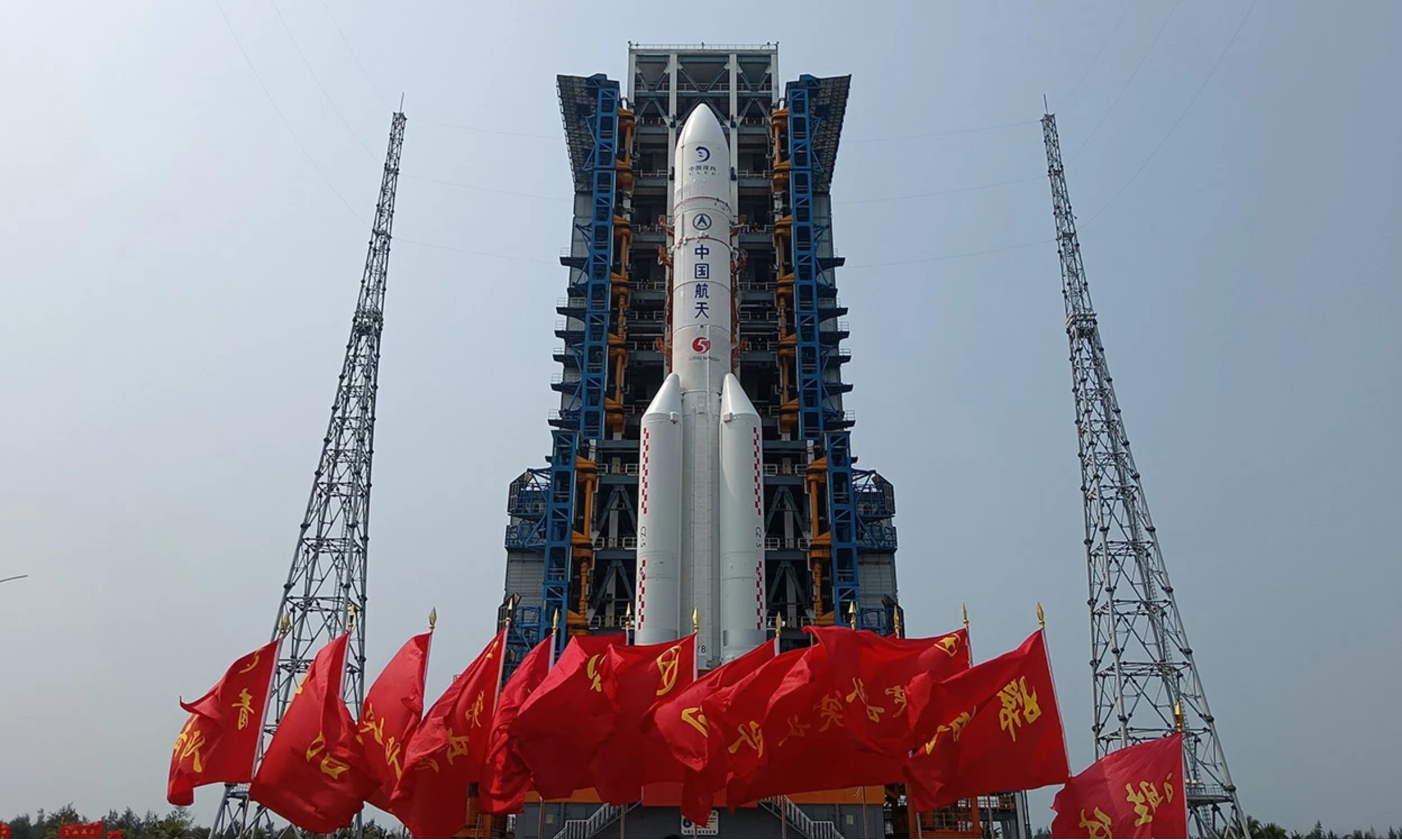
Further Resources
- Press Releases
- Chang’e 6 / DORN : Succès de l’alunissage et de l’allumage de l’instrument français (CNES)
- Lancement de Chang’e 6 / DORN vers la Lune le 03/05 (CNES)
- L’instrument français DORN prêt à révéler un des mystères de notre satellite naturel, la Lune (CNES/CNRS)
- DORN, l’instrument français de la mission Chang’e 6 (CNES)
- La contribution de l’IRAP à l’instrument DORN
- Press Reviews :
- China’s Chang’e-6 collects first rock samples from Moon’s far side (Nature)
- Chang’e-6 lands on far side of the moon to collect unique lunar samples (SpaceNews)
- Chang’e6 : la Chine atterrit une nouvelle fois sur la face cachée de la Lune pour en ramener des échantillons (Reves d’Espace)
- Chang’e 6 se pose sur la face cachée de la Lune (Cité de l’Espace)
- La sonde chinoise lancée début mai a atterri sur la face cachée de la Lune (FranceInfo)
- Chang’e-6 enters lunar orbit ahead of far side landing attempt (SpaceNews)
- Avec la sonde chinoise Chang’e 6, la France envoie son premier instrument sur la Lune (France Info)
- Le retour de la France sur la Lune avec l’instrument DORN sur la sonde Chang’e 6 (The Conversation)
- Le premier instrument lunaire français prêt à décoller avec la sonde chinoise Chang’e 6 (Le Parisien)
- China set to fetch first rocks from mysterious far side of the Moon (Science)
- What China’s mission to collect rocks from the Moon’s far side could reveal (Nature)
IRAP Contacts
- Pierre-Yves Meslin, Pierre-Yves.Meslin@irap.omp.eu
- King Wah Wong, Kingwah.Wong@irap.omp.eu






